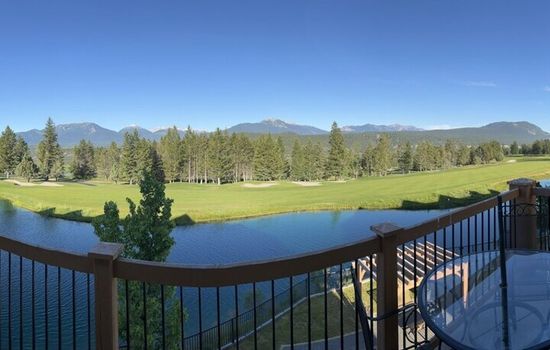Visitor centers at Glacier National Park are open daily from late April to October, 8 AM to 4:30 PM or later. During winter, they are open weekends only, 9 AM to 4:30 PM. From May 14 to June 10, hours are 9 AM to 4:30 PM. From June 11 to September 5, they are open 8 AM to 6 PM, and from September 6 to October 10, 8 AM to 5 PM.
At Glacier National Park, the entrance fee is $35 for a private vehicle, valid for seven days. Motorcycles cost $30, and individuals on foot or bicycle pay $20. Winter rates are $20 for vehicles, $15 for motorcycles, and $15 per person. Children under 16 enter free.
By car via Trans-Canada Highway (Hwy 1); by train via Canadian Pacific Railway (CPR); some bus and shuttle tours operate from nearby towns and cities.
Parking is limited, especially at Logan Pass. Cars and motorcycles can park at spots like Siyeh Bend, Avalanche, and The Loop along Going-to-the-Sun Road. No overnight parking allowed. No specific RV size restrictions mentioned, but parking is tight. No parking fees, but vehicle reservations and entrance passes are required.
Accessibility & permits
Emergency
- Cell service availability:Partial
Information not accurate?
Help us improve by making a suggestion.
Welcome to Glacier National Park, British Columbia, a hiker’s paradise nestled in the heart of the Canadian Rockies. Encompassing over 1,300 square kilometers of rugged mountain terrain, ancient glaciers, and pristine alpine meadows, Glacier National Park offers outdoor enthusiasts an unparalleled wilderness experience. Established in 1886 as Canada’s second national park, Glacier National Park is renowned for its towering peaks, breathtaking vistas, and extensive network of hiking trails.
- Area (km²)
- 2547.59
- Annual visitors
- 2 933 616
- Established year
- 1910
Top 3 Facts about Glacier National Park, Canada
The park receives up to 14 metres of snowfall each year, making it one of the world’s most active avalanche zones, with many snow sheds protecting the TransCanada Hwy#1 and the railway from avalanches. This extreme snowfall creates a unique environment for scientists and geologists to study avalanches.
The park boasts an extensive network of hiking trails, totaling over 400 kilometers (250 miles) in length.
Glacier National Park was established in 1886, making it one of the oldest national parks in Canada and the second national park established in the country after Banff National Park.
Family programs
- Junior Ranger
- Ranger-led Tours
- Workshops & Hands-on Activities
- Night Sky & Astronomy
- Family Camping & Overnight
- Water-based Adventures
Travel Tips
Plan Ahead
Before you visit Glacier National Park, research the park’s attractions, hiking trails, and facilities, and plan your itinerary accordingly.
Pack Appropriately
Be prepared for changing weather conditions by packing appropriate clothing and gear. Dress in layers, bring waterproof gear and bear spray.
Respect Wildlife
Glacier National Park is bear country. Follow safety protocols: make noise, carry bear spray, and store food properly.
Stay Informed
Check road conditions and weather forecasts before visiting, especially in winter. Road closures may impact your travel plans.
Seasons
Spring offers a stunning display of nature awakening—melting snow, wildflowers, waterfalls, and active wildlife. Some trails may still be inaccessible.
Summer is peak season. Ideal for hiking, camping, scenic drives, and viewing wildflowers and waterfalls. Long daylight hours and mild temperatures.
Fall is quieter with vibrant foliage and cool air. Great time for hiking, wildlife viewing, and photography.
Winter turns the park into a snowy wonderland. Great for snowshoeing, skiing, and wildlife tracking. Some roads or trails may be closed.
Information not accurate?
Help us improve by making a suggestion.
Where to stay
Frequently Asked Questions
Ready to dive into what Glacier National Park, Canada has to offer? Let’s tackle some of the burning questions you might have as you plan your visit!
-
The closest city to Glacier National Park in Canada is Revelstoke, which is located about 410 km west of Calgary and 575 km east of Vancouver. Revelstoke has its own commercial airport for convenience.
-
The Rock Garden Trail is a great option for kids, as it is only 0.4 miles roundtrip with a minimal elevation gain of 68 feet. The trail features boulders to climb and a forest with beautiful mountain views, along with interactive brochures and symbols to find along the way. This trail is particularly enjoyable for little climbers and offers a fun, interactive experience.
-
You can bring your dog to the campgrounds, but not on hiking trails due to the presence of grizzly bears and to prevent stress to wildlife. Dogs must be on a leash and under control, and you must clean up after them. They cannot be left alone in the campgrounds.
-
You can camp overnight in your RV, but there are limits. Only a few campsites can accommodate large motorhomes over 10 meters or 33 feet long. Smaller RVs, camper vans, and trailers can fit in more sites as long as they stay on the gravel pads.
-
The best time to visit is during the summer months, specifically from late June to mid-September, when the weather is warm and all trails and visitor facilities are open. This period offers long, sunny days ideal for hiking and exploring.




